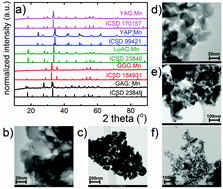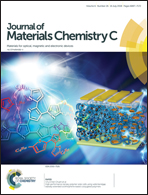Luminescence lifetime thermometry with Mn3+–Mn4+ co-doped nanocrystals†
Abstract
Luminescence thermometry is one of the most promising techniques of temperature sensing which provides fast and accurate readout in the non-contact regime. It has been shown that among six classes of thermometers, the most reliable are the ones whose operation is based on the kinetics of an excited level. In this work, we report luminescent thermometers based on the rise and decay times of Mn3+ and Mn4+ emission in co-doped nanocrystals. In order to understand the impact of the crystallographic structure on the relative sensitivities, five different hosts, namely Gd3Al5O12, Gd3Ga5O12, Lu3Al5O12, YAlO3 and Y3Al5O12 co-doped with manganese ions were considered in the analysis. Straightforward correlation between the obtained values of the decay time τ1 of the 2E excited state of Mn4+, the relative sensitivities of the rise time- and decay time-based luminescent thermometers and the average M–O (R−5) distances were found and discussed in terms of crystal field strength effects. The present study enables knowledgeable and intentional design of highly sensitive luminescent thermometers based on the kinetics of excited states.



 Please wait while we load your content...
Please wait while we load your content...